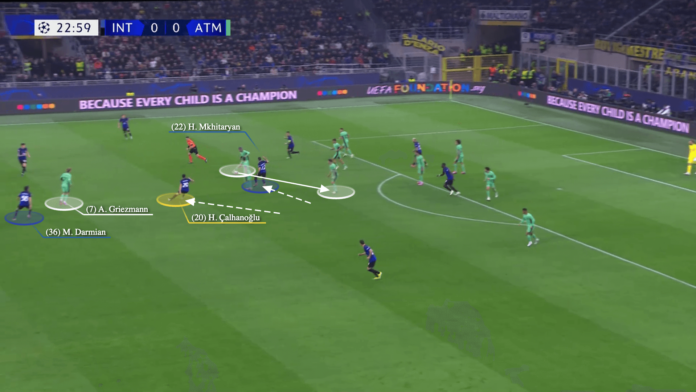If there’s one phrase to describe Inter Milan under Simone Inzaghi, then perhaps it’s ‘functional art’.
In football, a successful mix of artistic displays and functional units is one that few sides in the world have achieved. That blend of knowing how to slice through an opponent’s press with fluid build-up patterns while still constructing an impenetrable defensive block is a difficult feat, but one this Inter side has mastered.
Add in their pressing ability, the way they progress the ball up the pitch, their threat on attacking transitions and the various solutions they have in the final third, and you have a team who thrives in all phases of the game — including set pieces.
Against Atletico Madrid, Inter showed their poetry and their solidity. On the ball, their rotations and off-ball movement allowed them to play neatly through Atleti’s press when Diego Simeone’s side wanted to retrieve possession higher up the pitch in the first half.
And when the Spanish side dropped deeper, Inter kept trying to break them down with the help of their advancing wide centre-backs, Alessandro Bastoni and Benjamin Pavard, and further changes in positioning in the final third.
On the other hand, Inter’s pressing and stubborn defensive block limited Atletico’s chances, with the back three and midfield keeping an eye on Antoine Griezmann’s roaming between the lines. Yet for all of Inter’s tactical superiority, it was their ability to win the ball back quickly after they had just lost it that proved most crucial on the night.
The trio of Nicolo Barella, Hakan Calhanoglu and Henrikh Mkhitaryan are deservedly lauded for their technical brilliance. Calhanoglu has mastered the deep-lying-playmaker role after the departure of Marcelo Brozovic, conducting the play and spraying crossfield passes from one side to the other. Barella’s combinations with Inter’s right centre-back and wing-back are key to the side’s play down the right flank, while Mkhitaryan’s off-ball movement and late runs into the penalty area add to the attacking threat.
However, Inter’s midfield three are adept when the team doesn’t have the ball too. On top of understanding their duties during the press and when the side drops to a medium block, Barella, Calhanoglu and Mkhitaryan’s focus on winning the ball back as soon as it is lost helped minimise Atletico’s threat on transitions and also allowed Inzaghi’s side to attack an unorganised defence. This was visible from the early stages of the game.
Here, Matteo Darmian’s pass into Calhanoglu is intercepted by Samuel Lino and as the ball is moving towards Saul Niguez, Calhanoglu reacts quickly…
… forcing Saul into a quick pass back to Lino, who is pressed by Barella as the Italy midfielder drops to complete Inter’s counter-pressing and retrieve possession.

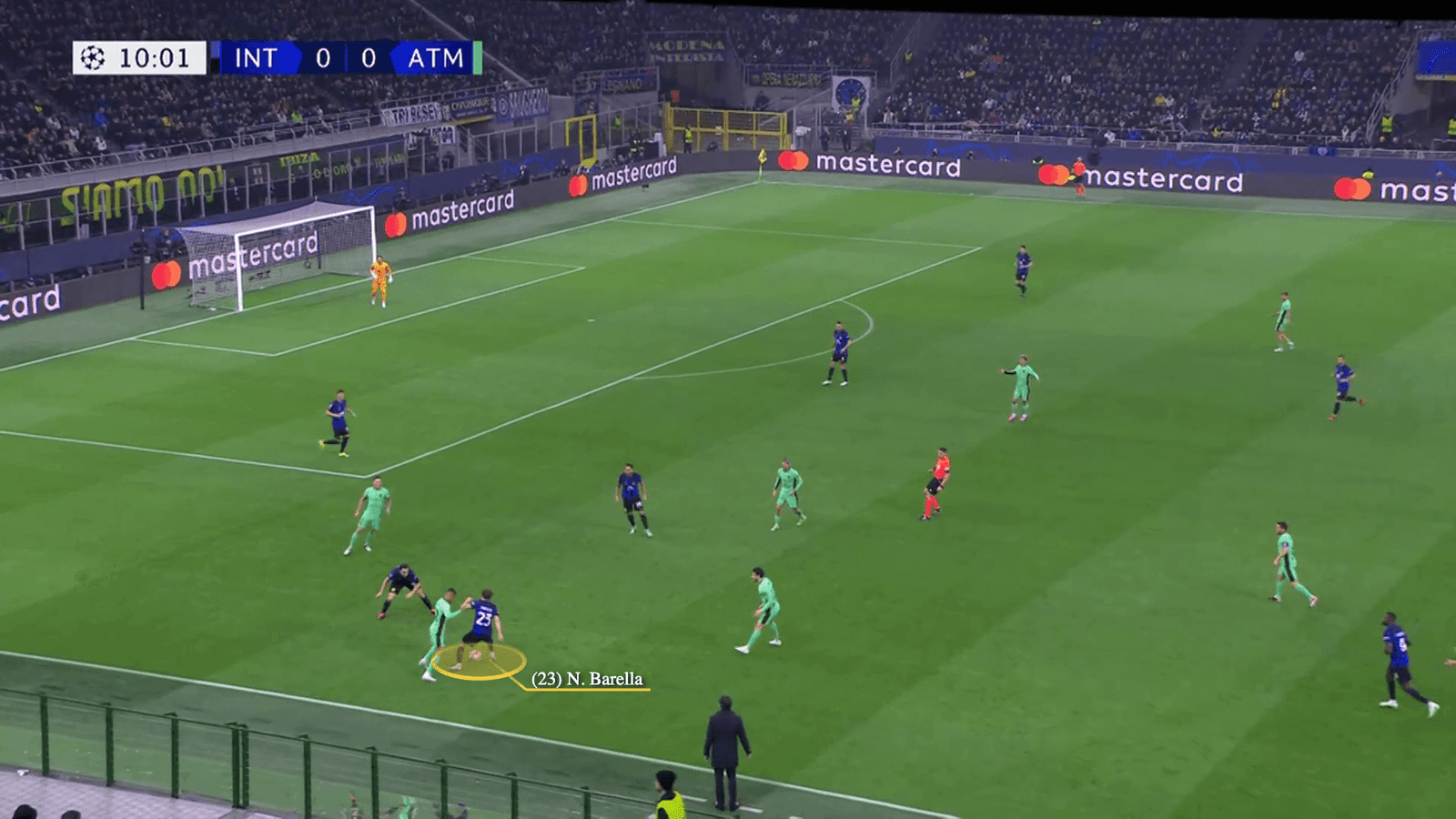
In another example, Mkhitaryan loses the ball in midfield after his pass to Lautaro Martinez goes astray.

Atletico then try to start the counter-attack, but Calhanoglu immediately moves to block the passing lane into Griezmann as Darmian closes down on the France forward from the other side. Meanwhile, Mkhitaryan presses Rodrigo De Paul, who squares the ball to Saul…
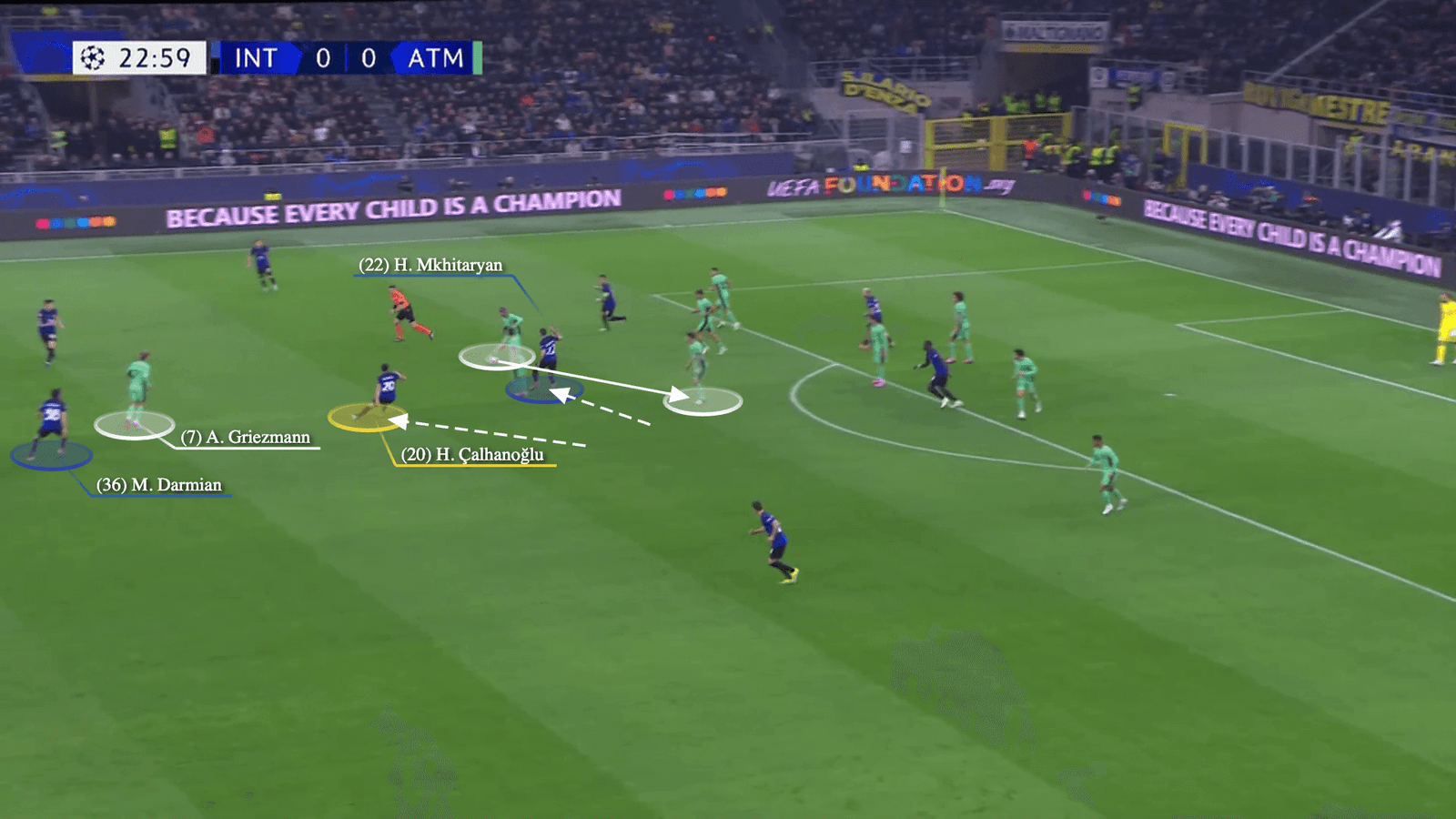
… and the Spanish midfielder’s attempt to find Griezmann fails after Calhanoglu intercepts the pass.
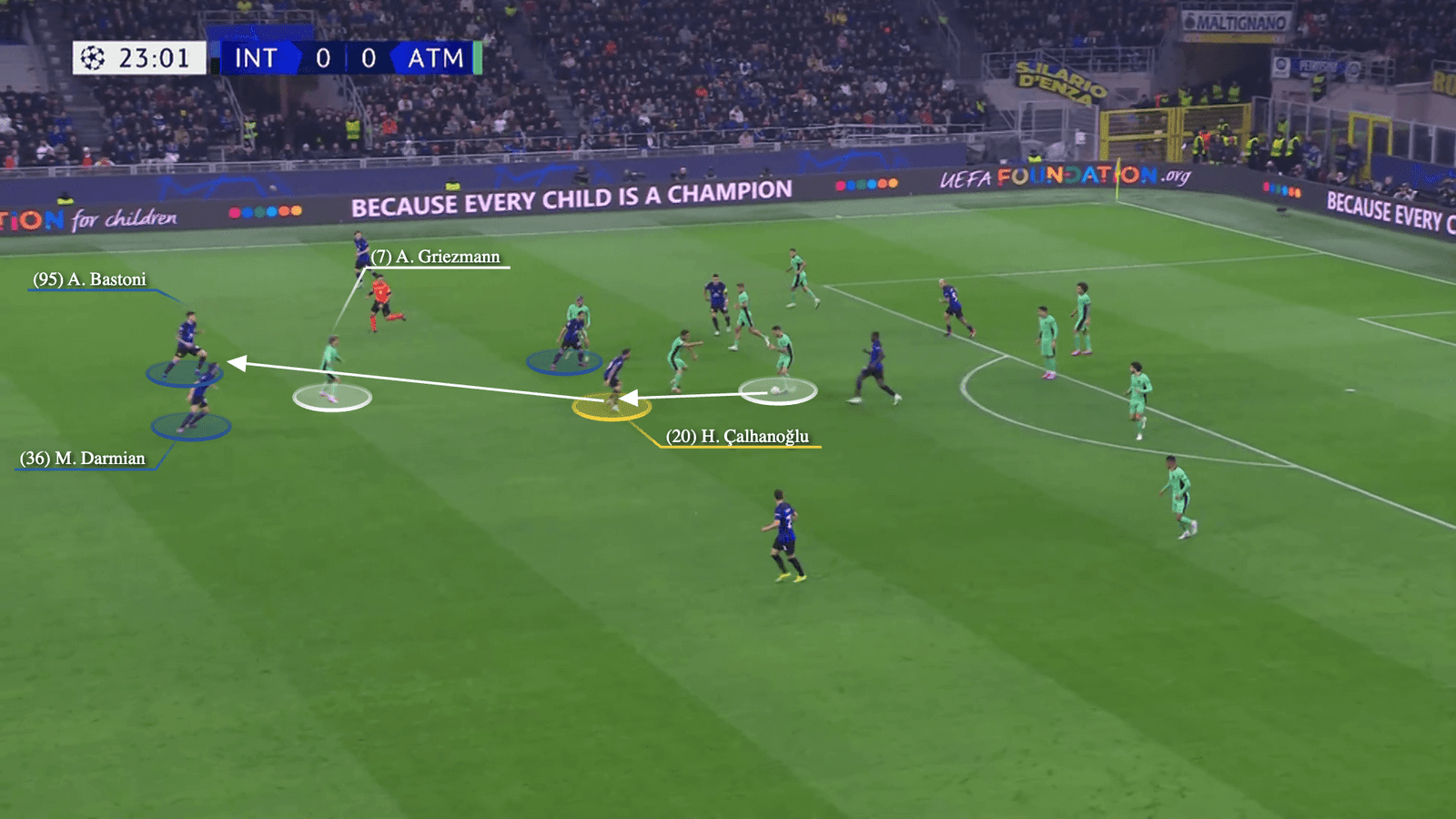
Inter’s rotations often mean their players are in unorthodox positions when the attack comes to an end, but their ability to win the ball back neutralised Atletico’s counters.
In this example, Barella is the widest Inter player on the right side as Calhanoglu passes the ball mistakenly to Marcos Llorente.

On the resulting counter-attack, Pavard moves across to press Alvaro Morata and prevent him from finding the advancing left wing-back, Lino…

… but Atletico’s counter continues when the ball falls to Koke with more space opening up in Inter’s defence. Now, as Lino runs into space, Barella sprints back…

… and manages to intercept Koke’s pass to halt the counter.


The tenacity of Inter’s midfielders when their side lost the ball aided their attacks as well.
Here, Inter lose possession when Darmian’s run behind the defence is tracked by Lino…
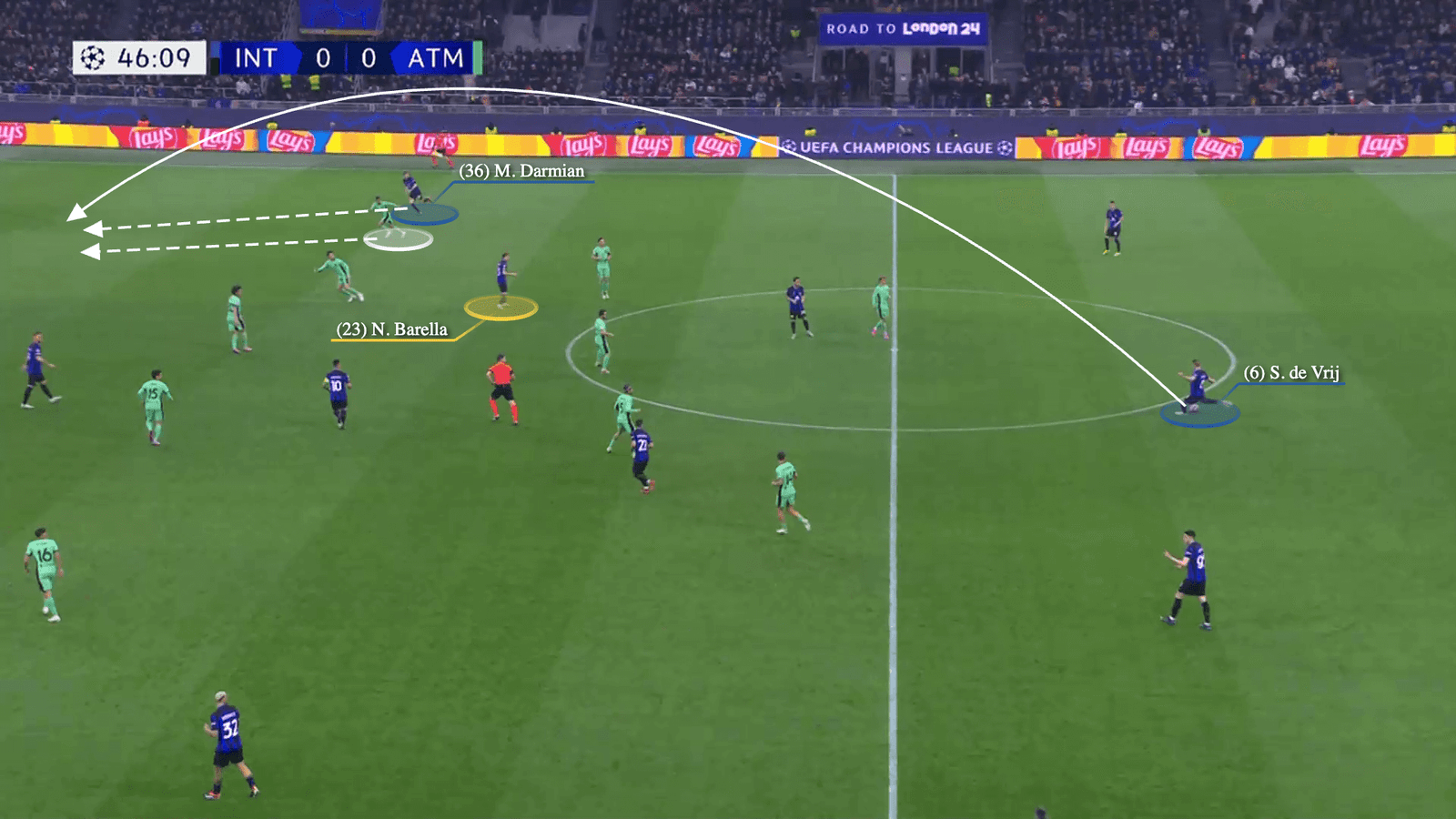
… but Mario Hermoso’s pass into his wing-back is pounced on by Barella…
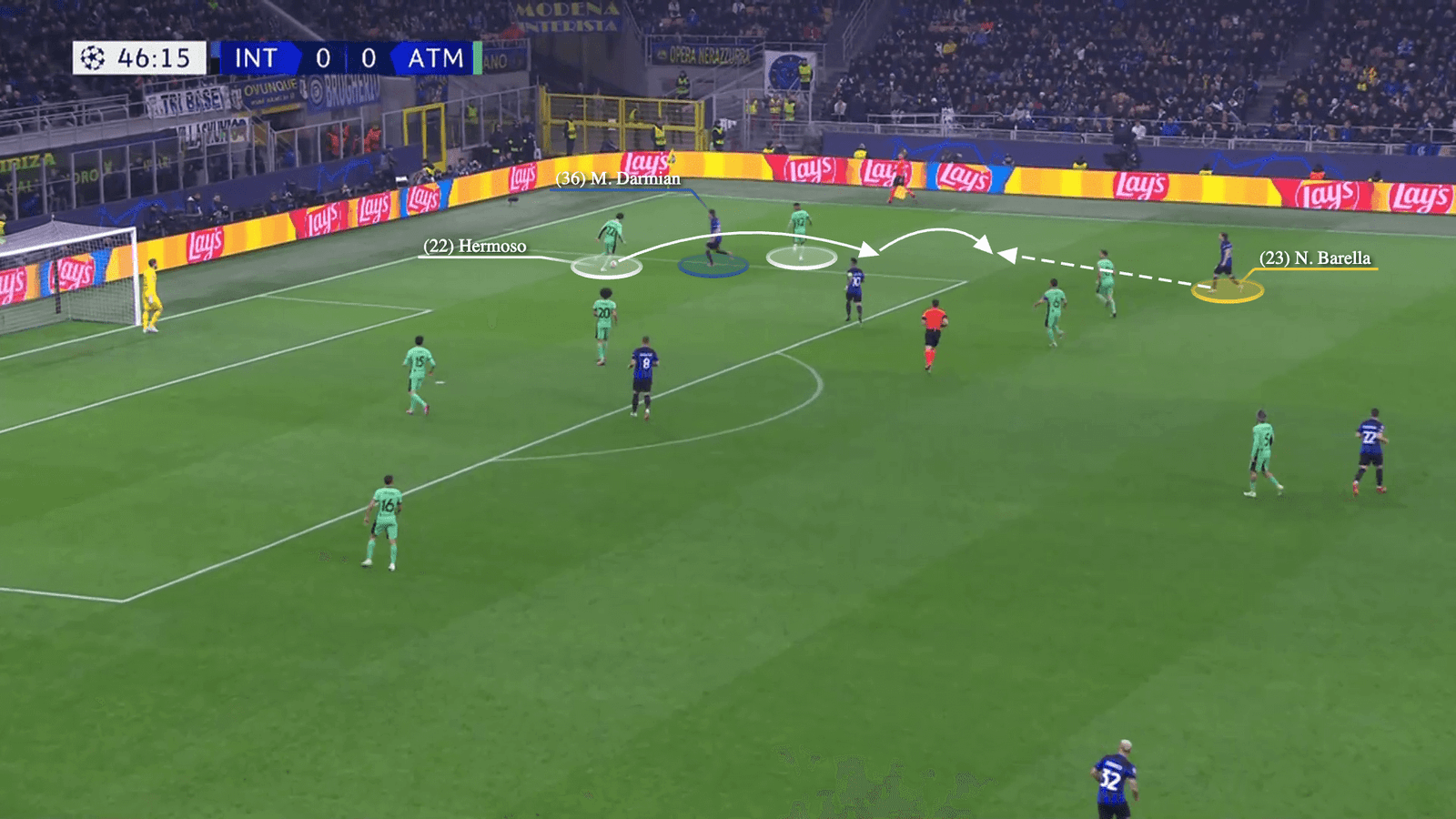
… who finds Martinez in the penalty box, and the striker’s shot is blocked by Axel Witsel.
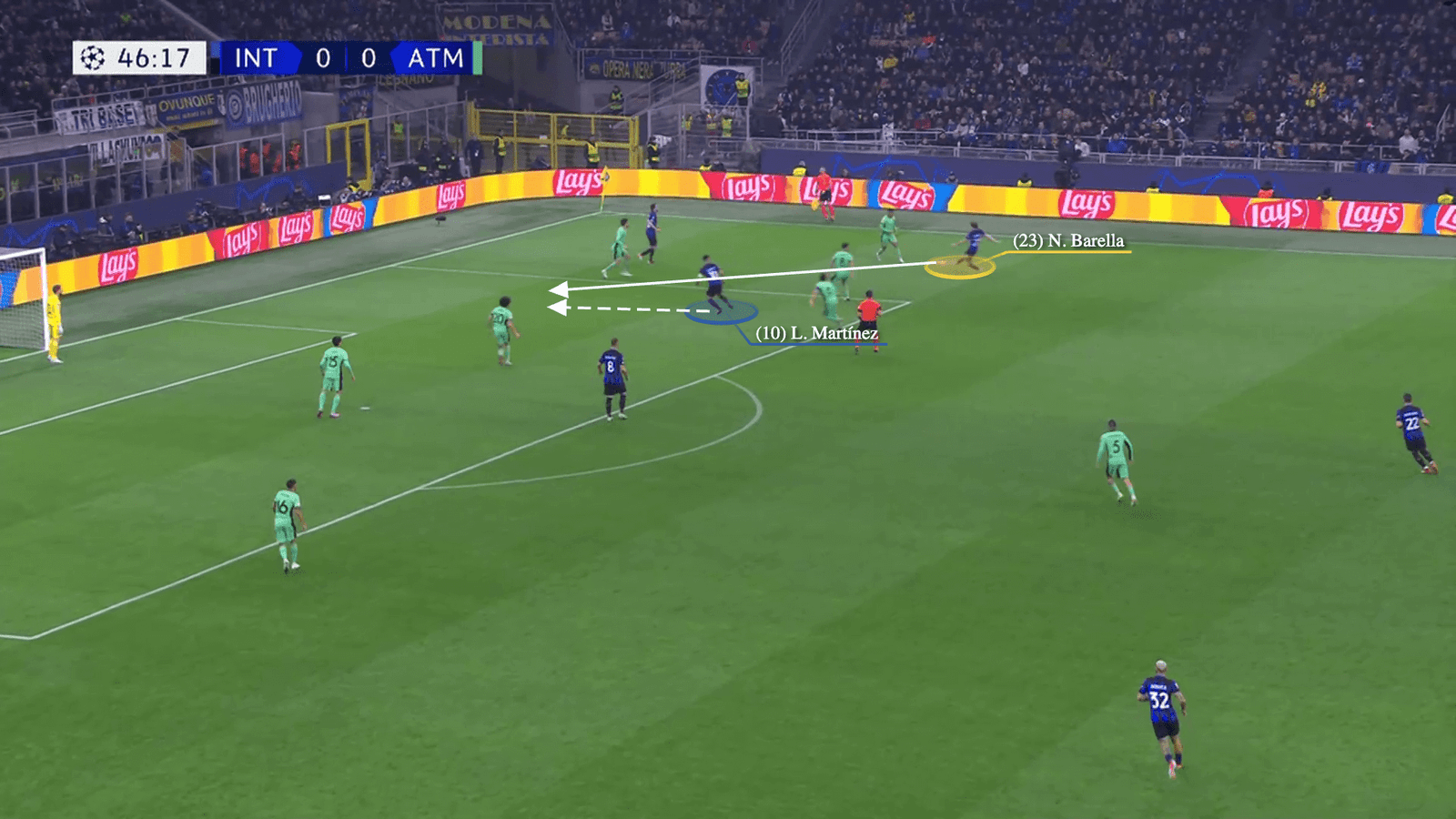

On another occasion, Inter’s rotations see Calhanoglu covering for Pavard while the France defender attacks the penalty area. Under pressure from Witsel, Pavard loses the ball and Reinildo clears it…

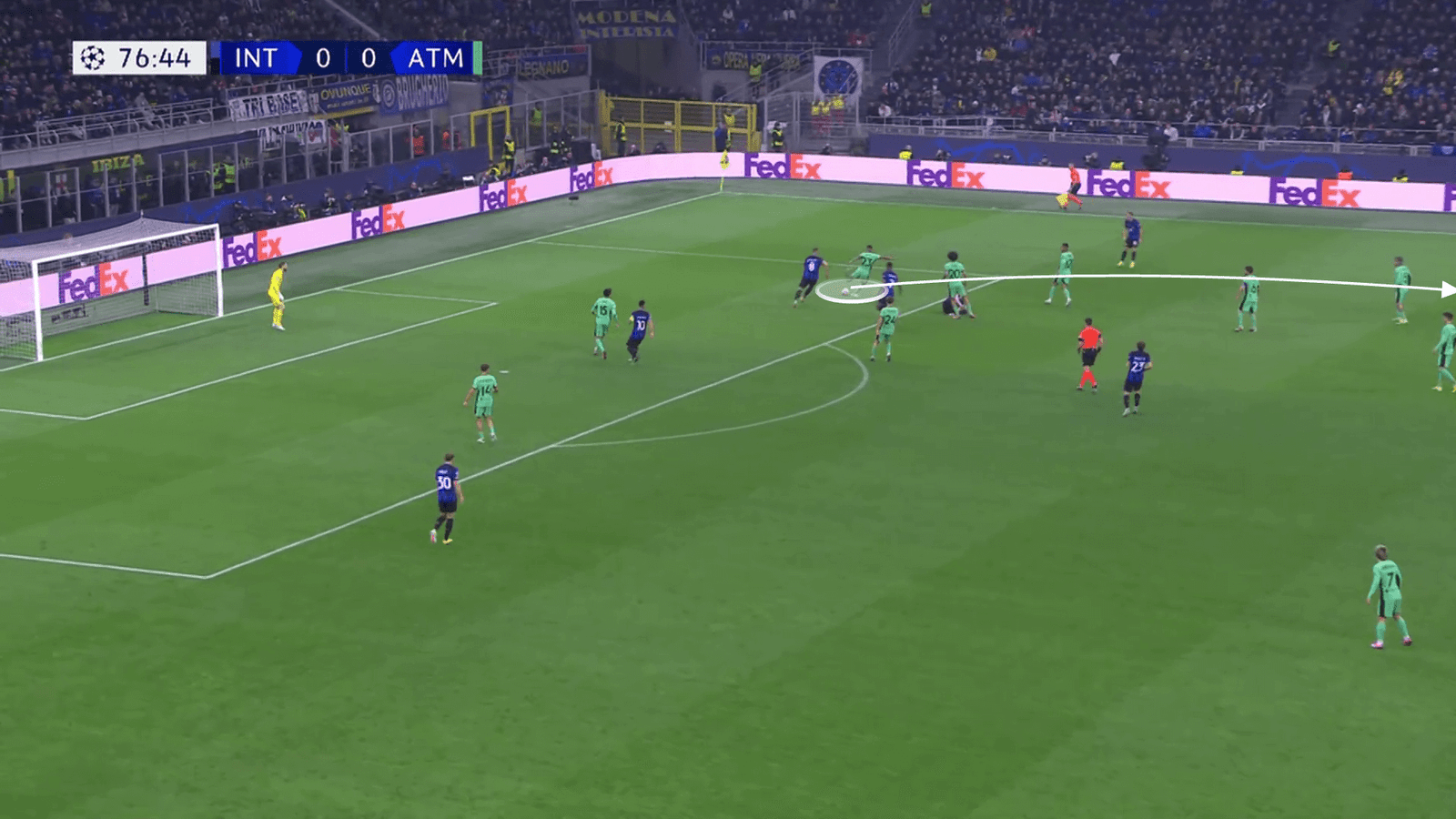
… but Calhanoglu’s recovery allows Inter to attack an unorganised defence. Calhanoglu quickly crosses the ball into the box towards Martinez…
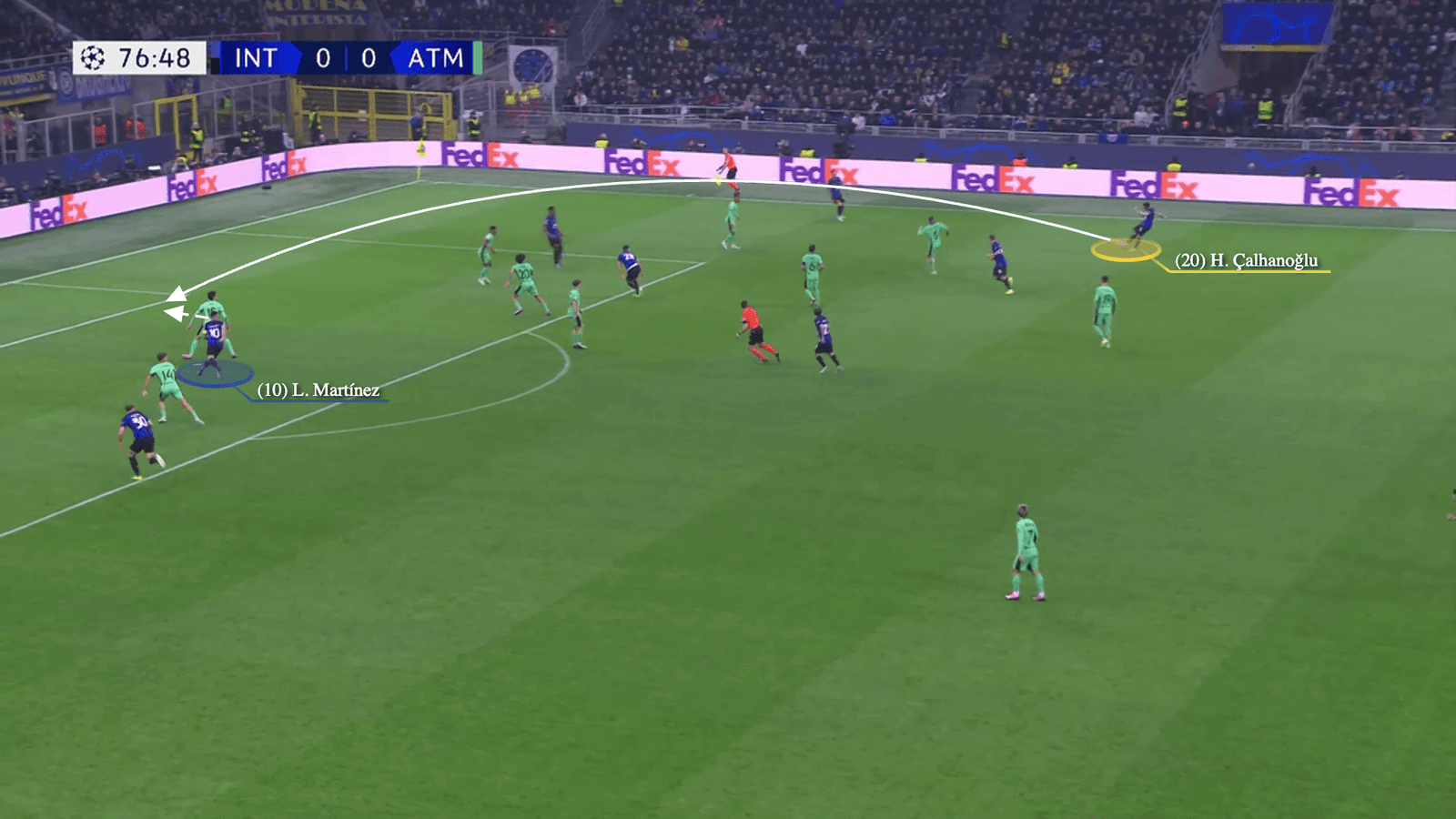
… whose header is saved by Jan Oblak.
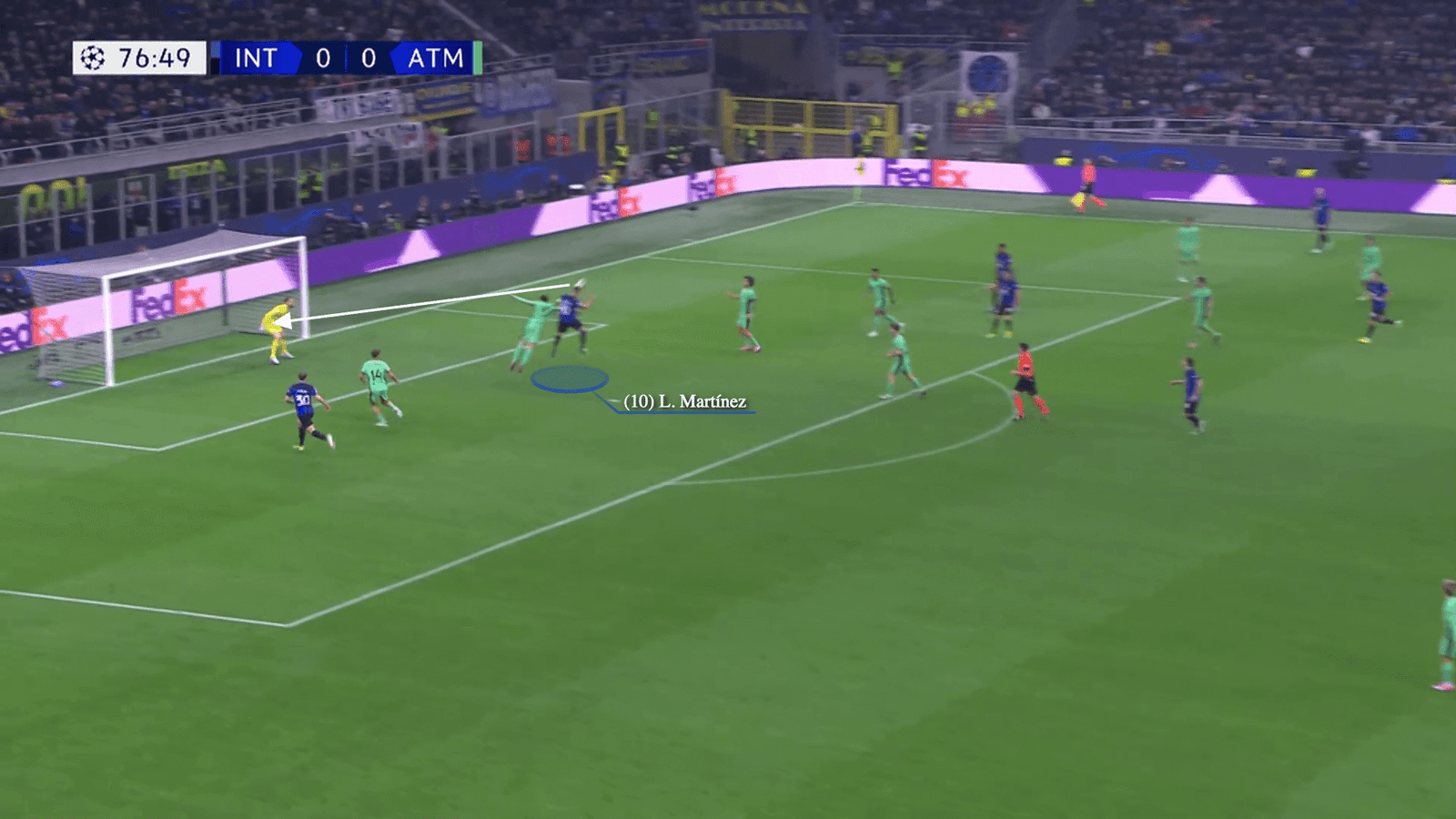
Inter could have scored through a fluid build-up move early in the second half or when their rotations caught Atletico’s players out in the 62nd minute, but Marko Arnautovic missed both chances.
The only goal in the game came from Inter’s midfield winning the ball back after losing it. From an Inter throw-in, Barella heads the ball forward towards Atletico’s defence…
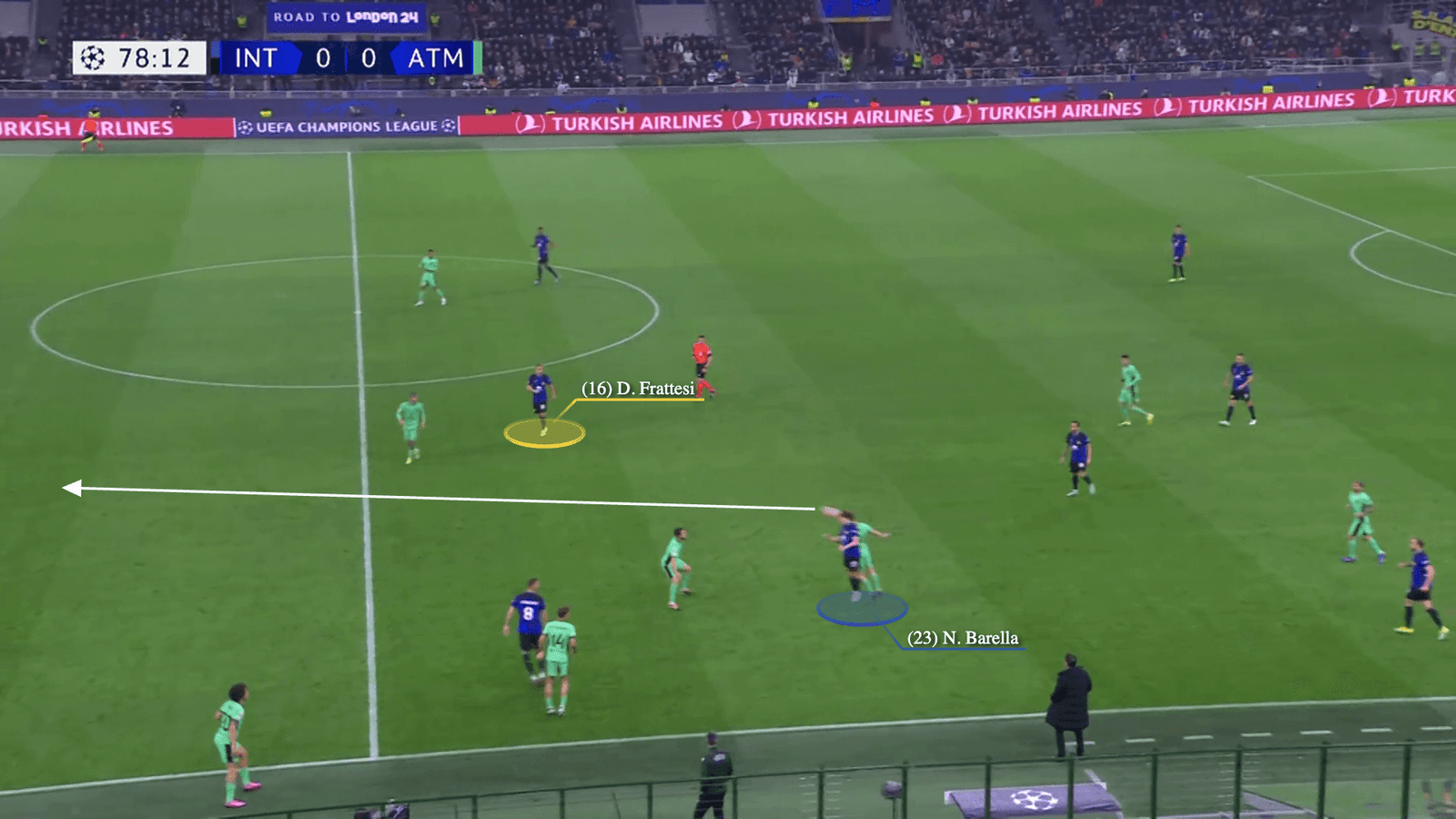
… and Davide Frattesi, who replaced Mkhitaryan, capitalises on Reinildo’s poor touch by winning the loose ball, which puts Martinez through on goal.


The striker’s shot is saved by Oblak, but Arnautovic manages to score from the rebound.

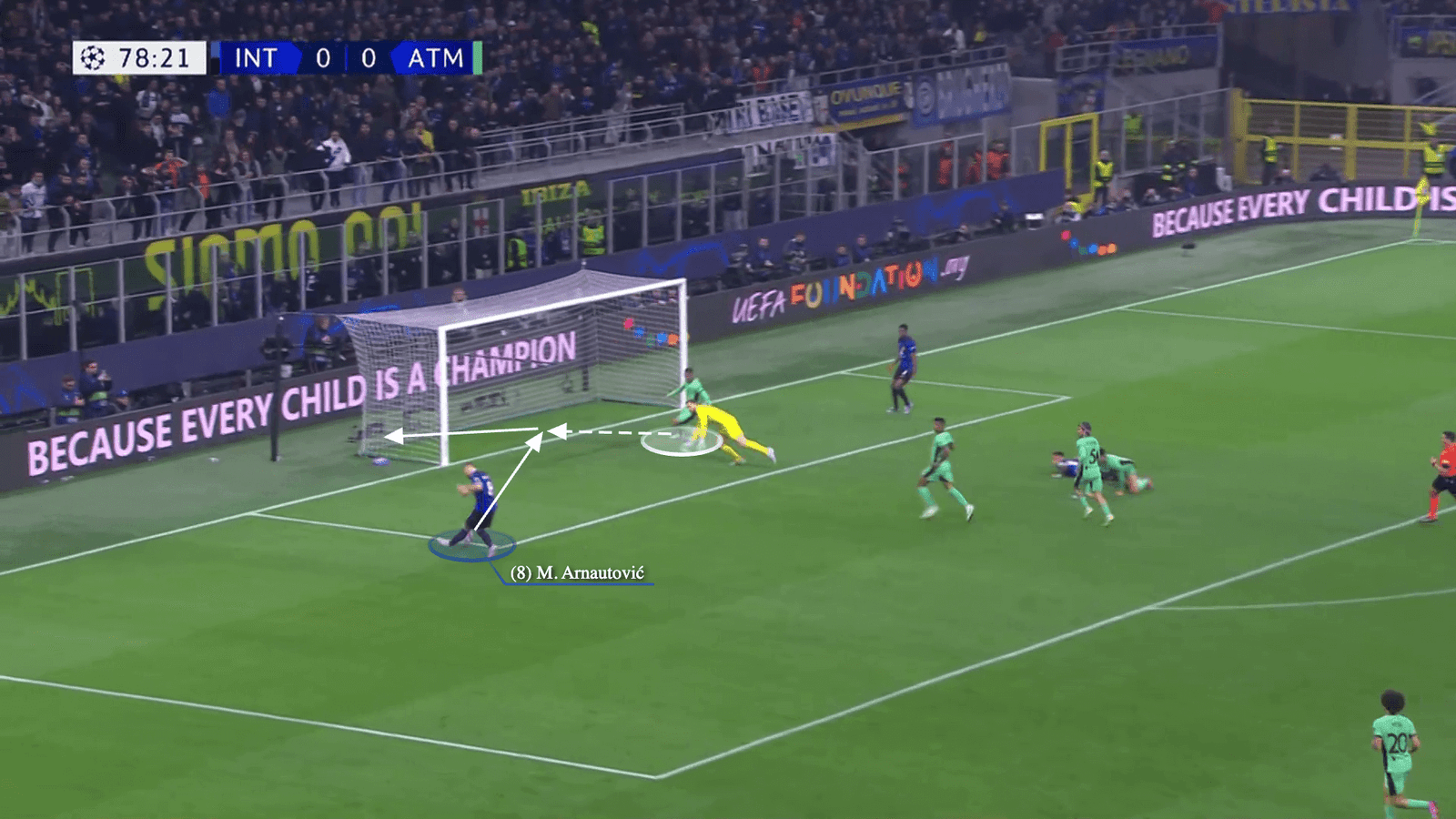
Inter’s midfield is the perfect representation of this side: fluid on the ball and effective off it.
Whether teams try to press them high, sit deep or attack them vigorously, Inzaghi’s Inter are equipped to handle various situations — a structure that could take them far in what might be one of the most open Champions League campaigns for years.
Read the full article here


